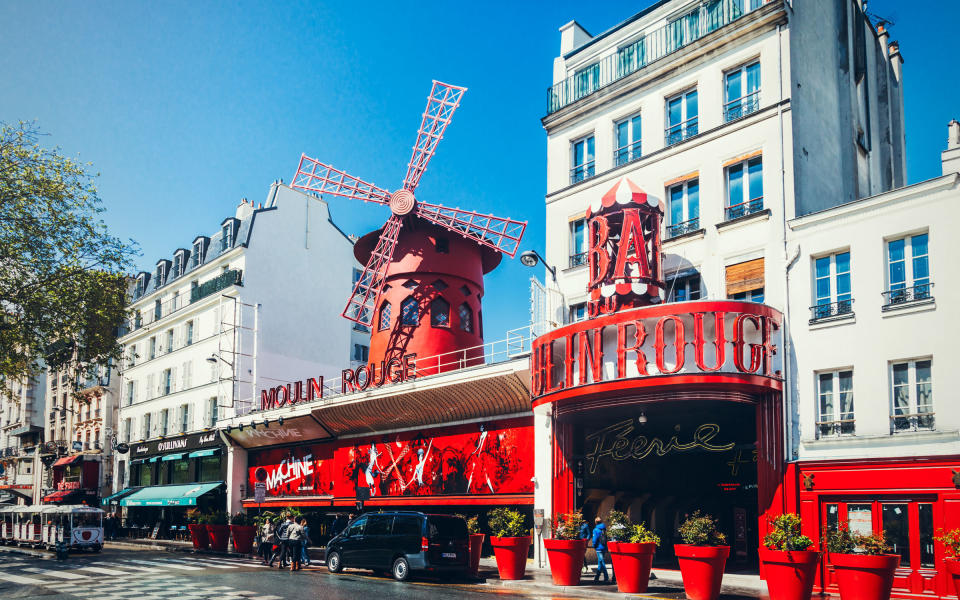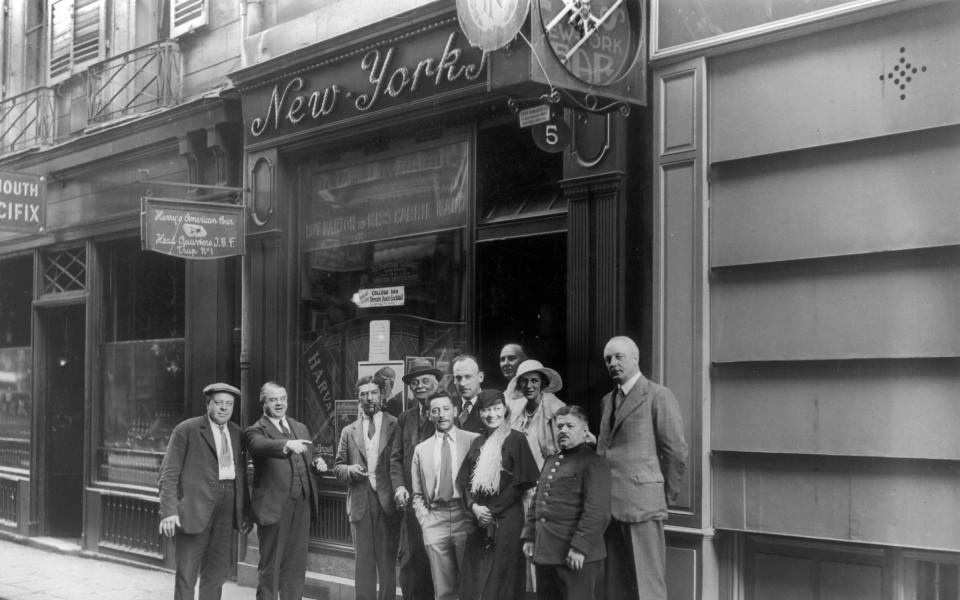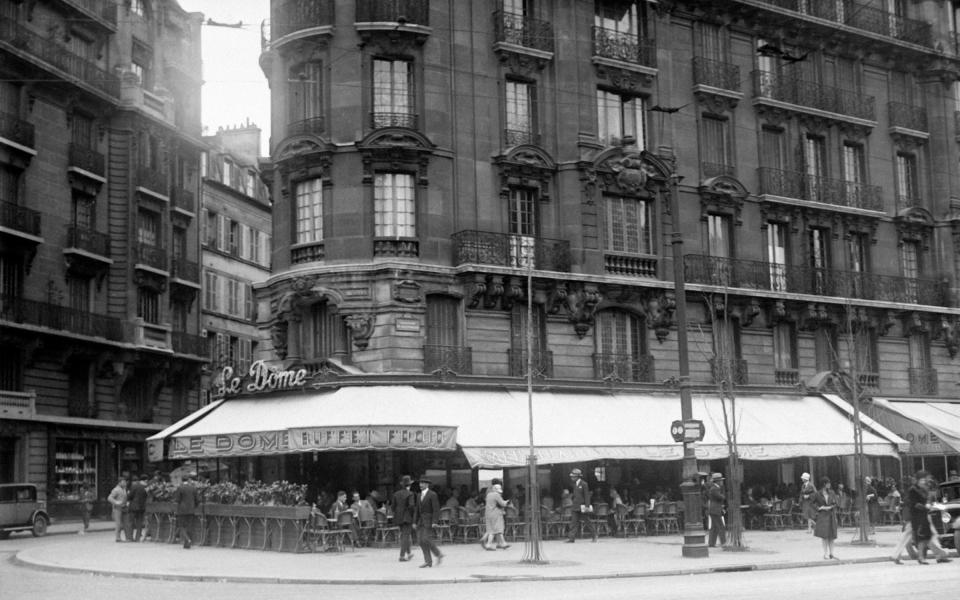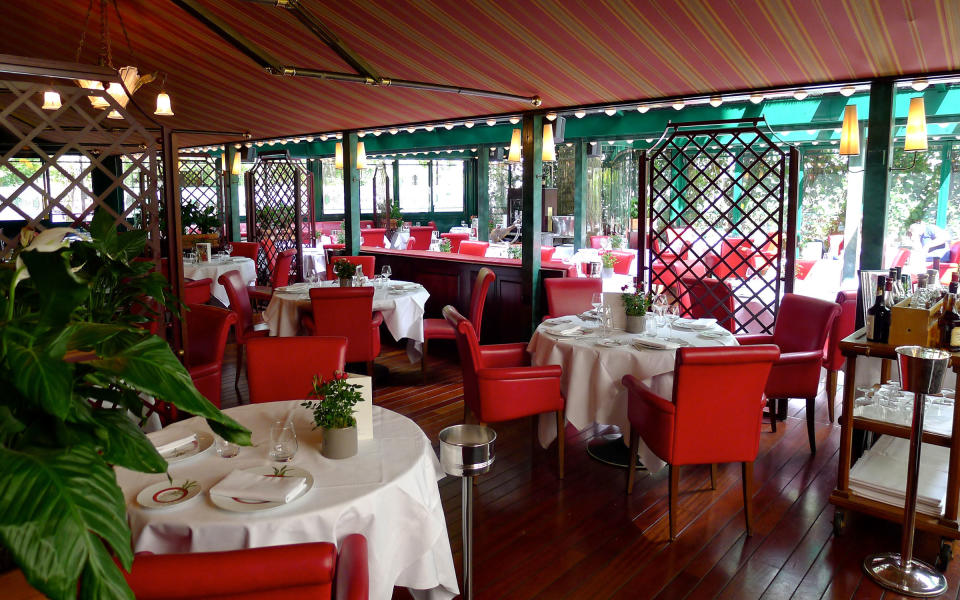See F. Scott Fitzgerald's Paris, in All Its Jazz Age Glory
Basking in the glow of success from the recent publication of The Great Gatsby, F. Scott Fitzgerald dazzled the parties of the City of Lights and closed down the nightclubs in Montmartre.
But Paris was also where he would slip deeper into the throes of alcoholism and depression, and where his wifeZelda would experience herfirst mental breakdown.
While he may not have spent as much time in the French capital as he did on the Riviera, or even in the southern United States, the city left an indelible mark on both the man and his work.
The best of America drifts to Paris. The American in Paris is the best American, Fitzgerald once wrote. It is more fun for an intelligent person to live in an intelligent country. France has the only two things toward which we drift as we grow olderintelligence and good manners.
Paris became the center of cultural and intellectual life for the so-called Lost Generation following World War I. A group of writers and artists, including many Americans, who felt increasingly disenfranchised in the wake of the war sought shelter in the havens of Europe and in the French capital in particular.
There they found a cultural and societal refugea place where most things were permissible and where the puritanical morality of the U.S. was ridiculed. Perhaps most importantly for Fitzgerald and company in the time of Prohibition, alcohol ran freely.
When Fitzgerald and Zelda first took up residence in Paris in 1925, the city was in full swing.
Paris is kind of where everybody loses their moral compass, Kirk Curnutt, a leading Fitzgerald expert at Troy University, told Travel + Leisure. It was almost like those expatriates went over there to get lost but also to lament being lost.
While Fitzgeralds haunts have certainly evolved over the years, and some have disappeared altogether, visitors to Paris can still relive the old-fashioned glamor of Fitzgeralds Paris. It requires imagination, champagne, and a touch of despair.
Unlike his fellow expats Ernest Hemingway, Gertrude Stein, and their cohorts, Fitzgerald often preferred the 19th century refinement of the right bank over the unabashed Bohemia of the rive gauche.
The Fitzgeralds rentedan apartment at 10 Rue Pergolese in the late 1920s, a few steps from the Bois de Boulogne park in northwestern Paris. Inaugurated in 1854 by Napoleon III, the sprawling English-style garden had changed remarkably little in the intervening 70-odd years.
In Fitzgeralds day, the Bois was a place where the young families of the posh 16th arrondissement would stroll on Sundays or picnic on the well-manicured lawns. The expansive park figures in multiple works of the writers fiction, including an anecdote in The Great Gatsby, as well as a scene in his 1931 story A New Leaf.
Hop in a cab up the boulevard de Courcelles and enter the steep streets of Montmartre. For centuries, the butte Montmartre had been a hub of the seedier side of artistic life, and it remained a village separate from Paris until 1860. Known for its can-can dancers and the flow of absinthe in the late 19th and early 20th centuries, the village on a hill was the site of effervescent nightlife.

The Fitzgeralds passed many nights at Ada 'Bricktop' Smiths saloons on Place Pigalle. Bricktop was a Harlem transplantan African-American singer, dancer and all-around entertainer who played hostess to some of the greatest expatriate talents of the Jazz Age. Cole Porter always had a table reserved, no matter the size of the crowd. Bricktops served as just one of dozens of meeting spots for the intellectual circles of the Lost Generation to mingle, drink and find inspiration.
Paris was really the center of American cultural life, Park Bucker, a leading Fitzgerald scholar from the University of South Carolina Sumter, told T+L. It represented an old world beauty and elegance and sophistication...To be accepted in Paris was very important to him.
Though Bricktops has long since disappeared, the convivial atmosphere of cheap booze and midnight debauchery is still alive and well in Pigalle. With hipstery joints like the Sans Souci that might have made the Fitzgeralds cringe, and an array of sex shops on the Boulevard Clichy, Pigalle has brought its edgy reputation into the 21st century.
If you can get in, one of the chicest watering holes in Pigalle is Le Carmen. The lounge is situated in the former townhouse of Georges Bizet, the 19th century composer of the opera Carmen. This champagne-fueled rococo gem maintains the sprawling apartment in the style of its former owner.
For a classic Fitzgerald gin palace, head to Harrys Bar in the 2nd arrondissement. The American-style cocktail bar became a hub for Stein, Fitzgerald, Hemingway, and their fellow writers. The bar even claims to have invented the Bloody Mary.

The iconic lounge sits a few blocks from the Hotel Saint James & Albany, where Zelda and Fitz stayed on one of their first visits to Paris in 1921. Their raucous behavior, including an incident in which they used a belt to rig the elevator to only stop at their floor, led them to be thrown out of the hotel, the Guardian reported.
While incidents such as these depict the fun-loving, party-boy spirit that made F. Scott the poster child of the Jazz Age, they hint at some of the tensions in his personal life.
By 1930, Zelda was hospitalized outside of Paris for a mental breakdown. Scott grew more volatile, with outbursts of violence, as the couples boom years came to an abrupt bust.
The popular picture of a blond boy scribbling off bestsellers in odd moments between parties is nonsense, read an excerpt from a New Yorker profile of Fitzgerald published in 1924. Hes a very grave, hardworking man, and shows it. In fact there is definitely the touch of the melancholy often obvious upon him.
The late 1920s became a time of disillusionment for the writer, as he sobered to his marital situation while drinking more and more heavily.
The young Fitzgerald might have felt more at home at the glitzy salons of the bourgeois right bank, but much of his social circle congregated around the cafs, bars, and restaurants of the 14th arrondissement, or Montparnasse. In 1928 he and Zelda took up residence on Rue Vaugirard, near the Luxembourg gardens.

He, Hemingway and their clan spent many hours drinking champagne and whisky at the Cafe du Dome, La Closerie des Lilas and other hubs of American life, including the Dingo Bar on Rue Delambre where the pair first met. While Hemingway would often come to the cafs to write, Fitzgerald was there to drink, and he was known to finish at least one bottle of wine before dinner.

The glitz and glamor of the roaring twenties faded to a dim glow in the last years the Fitzgeralds spent in Paris, and by 1930, they would leave the city, never to return.
Now once more the belt is tight and we summon the proper expression of horror as we look back at our wasted youth, Fitzgerald wrote of the Jazz Age in 1931. It seemed only a question of a few years before the older people would step aside and let the world be run by those who saw things as they wereand it all seems rosy and romantic to us who were young then, because we will never feel quite so intensely about our surroundings any more.
Related Articles

